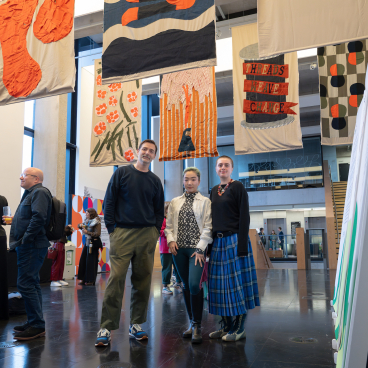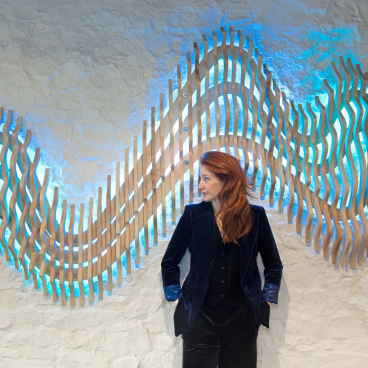Meet the maker: Closed-loop textile artist, Sandra Junele.
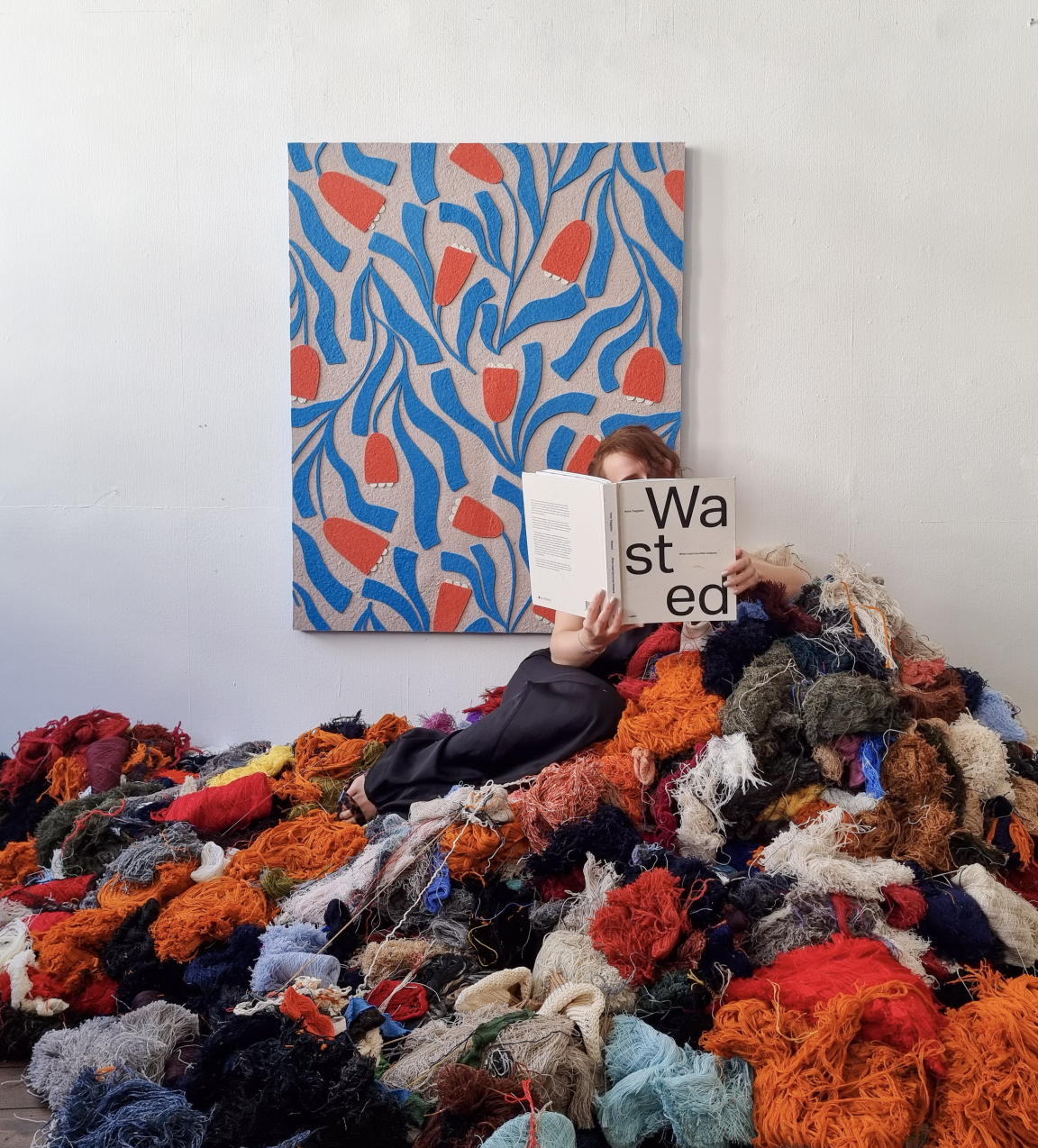
Credit: Sandra Junele / Pattern design by Sofia Daskalaki
Dundee-based artist, Sandra Junele creates one-of-a-kind works of art from discarded textiles, supporting a circular economy.
Each stage within the lifecycle of Sandra’s artworks is meticulously considered; from setting up her own local supply chains, to developing her own bio-based dissolvable glue. Her pieces can be submerged in water, breaking up the material for re-use in future projects.
Her focus towards repurposing unwanted materials into valued artworks for interiors stems partly from her grandfather, she tells us, who also enthused a sense of creativity and resourcefulness into discarded objects. Sandra’s dedication to sustainability has gone on to fuel a host of creative collaborations, such as that with textile manufacturer and Material Source Studio partner, Camira.
As part of our recent Makers in Residence: Scotland showcase at Material Source Studio, Glasgow we exhibited two of Sandra’s Mannequin Head sculptures.
In this chat, Sandra talks to us about the design process behind her bespoke, biodegradable works of art, Dundee’s rich design and craft scene, and her future plans for collaboration and community-based making.
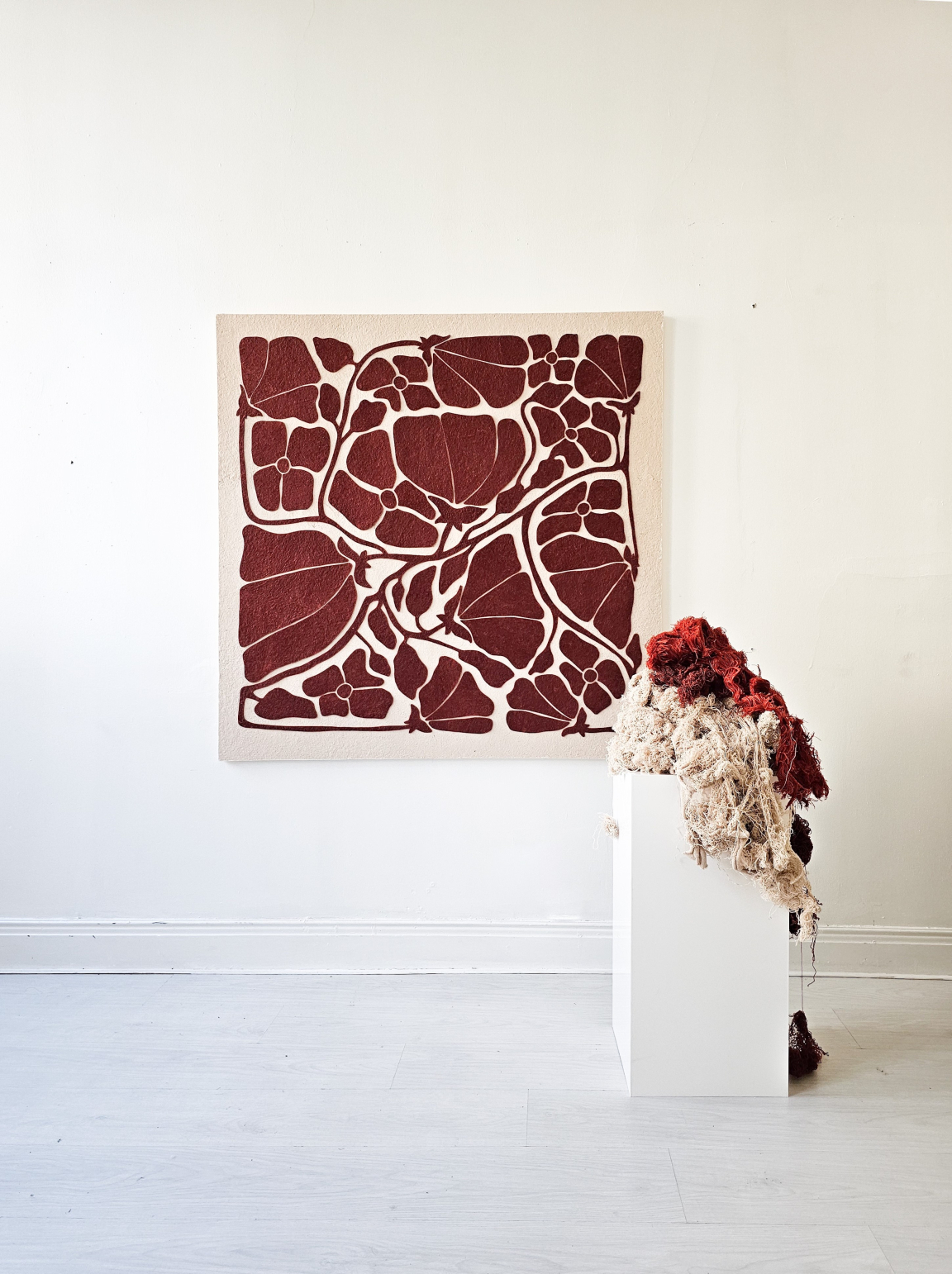
Credit: Sandra Junele / Poster design by Rebecca Searl-Stevens
Firstly, how did you get started?
“The journey started in my childhood, where I had a strong interest in repurposing different kinds of waste into something new. Fast forward to university, as a final-year textile design student, I began exploring the types of waste produced by the knit department and discovered a significant amount of textile waste.
“I started collecting this waste and conducted hundreds of experiments to find creative ways to repurpose it. One of my early experiments involved mixing PVA glue with shredded textile waste. This led me to search for natural organic glue replacements that are natural and dissolve upon contact with water, thereby minimising waste after the product's use.
“The final piece and idea received great feedback and awards, and I realised its potential. After finishing university, I continued to develop the idea. I also began learning about different aspects of the business while moving into a larger studio space to scale up my smaller sample-based artworks to larger scale pieces.”
Talk us through the design process behind your one-of-a-kind textile artworks
“The design process for my one-of-a-kind textile artworks begins with collecting waste materials from local manufacturers, designers, and universities. This waste comes in various forms, such as loose threads, samples, clothes, and yarn cones.
“The first step is to separate the waste by colour. Once sorted, I shred the waste, using a shredding machine for shorter fibres and by hand with scissors for longer fibres. With the fibres prepared, I then cook my own plant-based glue, making a fresh batch for each project. The shredded fibres are mixed with this glue and either rolled out into sheets or applied to moulds.
“As the sheets dry, they become hard, similar to cardboard. At this stage, they can be cut, sewn, embroidered, screen-printed, or layered according to the design. Finally, each sheet is mounted on a wooden frame, ready to be displayed as a unique piece of sustainable art.”
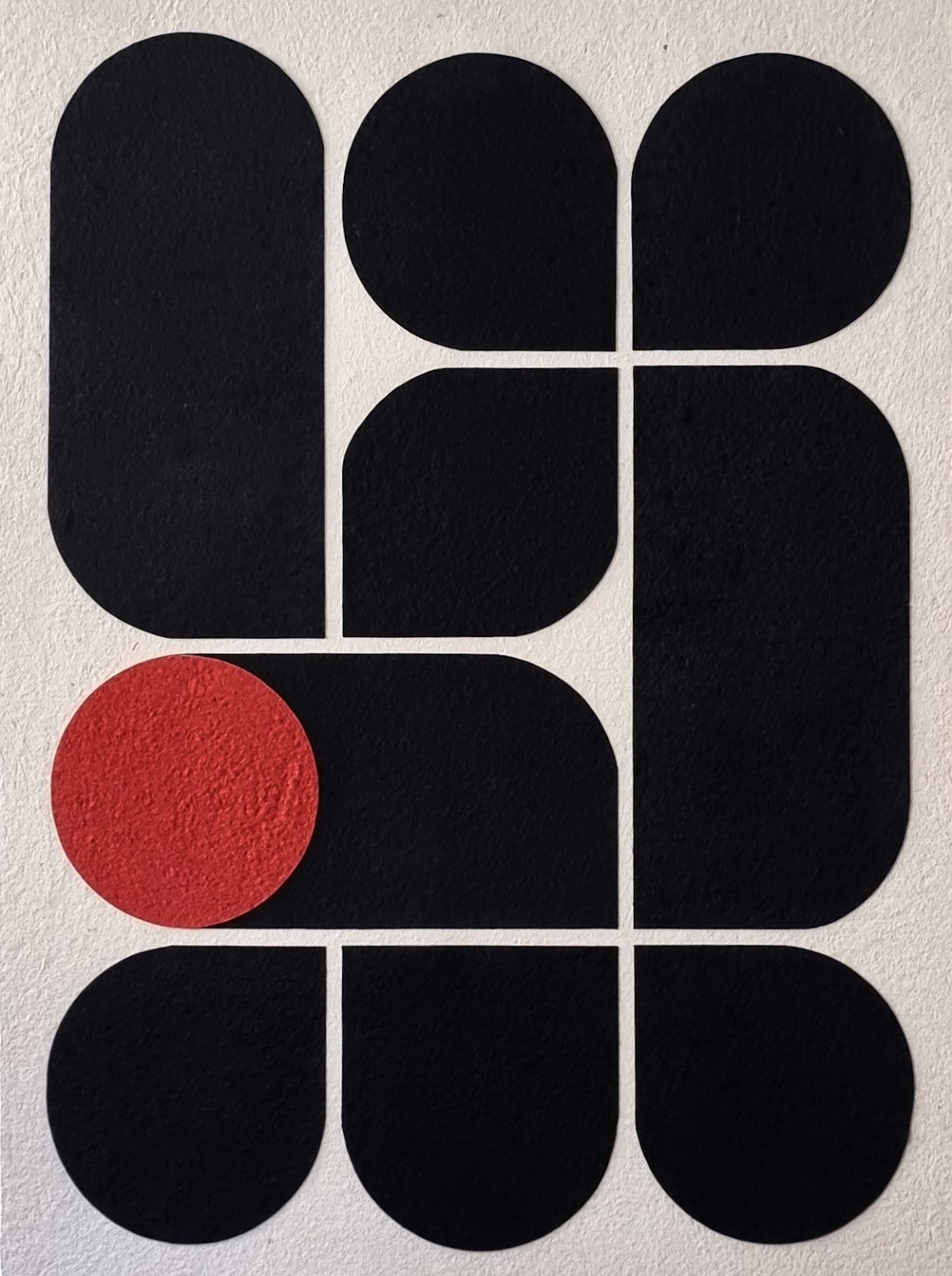
Credit: Sandra Junele / Poster design by Vratislav Pecka
Where do you source the thread waste for your designs?
“I have recycling bins placed at manufacturers and universities where people can dispose of their textile waste. Once these bins are full, I collect the waste.
“Designers also play a crucial role by donating their unwanted materials. One memorable donation came from a knit designer who had been collecting samples of her work for 15 years. This mix of sources ensures a diverse range of materials, each with its own story, contributing to the unique character of my artworks.”
How have you considered the life cycle of the artworks you create?
“When it comes to the life cycle of my artworks, I place a strong emphasis on both durability and end-of-life considerations. Firstly, my artworks are designed to last. For instance, some of my earliest pieces from three years ago are still in excellent condition, as if they were made just yesterday. To ensure this durability, my artworks thrive in a dry, warm environment. This careful consideration of their care helps maintain their quality and longevity.
“For the end-of-life stage, I focus on sustainability and circular economy principles. I use an all natural ingredient glue, and textile waste made from natural fibres, which makes my artworks biodegradable.
“Recently, I conducted an experiment where I left one of my artworks in the forest to observe how nature would break the piece down. I visited the site weekly, documenting the process and sharing updates on my Instagram. It took one week for the artwork to start decomposing and four weeks for grass to begin growing through it.
“Additionally, my artworks can be reused when no longer needed. By placing them in water, the natural glue dissolves, leaving me with the fibres that can be repurposed for new projects. This approach not only reduces waste, but also supports a circular economy, ensuring that the materials continue to have a life beyond their initial use.”
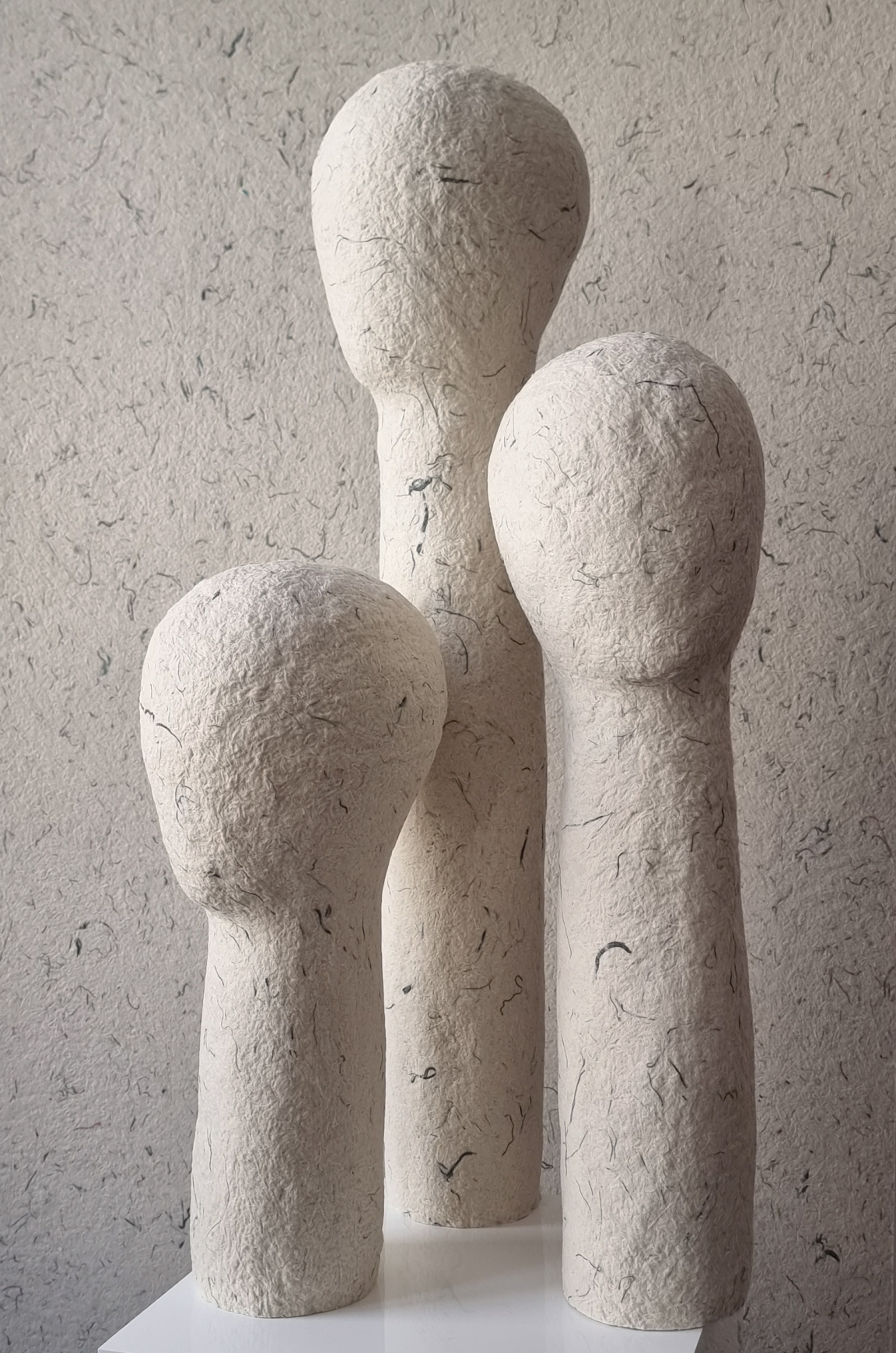
Credit: Sandra Junele
And where did your interest in repurposing discarded materials spark?
“My interest in repurposing discarded materials has deep roots in my family history and came to me naturally. Growing up, I was profoundly influenced by my grandfather, who was known for his "golden hands." I watched him weave baskets from twigs, create decor from found wood, build a summer house, and even assemble small tractors from scrap materials. His creativity and resourcefulness were truly inspiring.
“My parents also embraced the tradition of making and repurposing. They constantly turned to DIY projects, whether it was fixing things, crafting, or building. Delving further into our family's heritage, I discovered a longstanding tradition on both sides of the family of turning wool into yarn and then into garments.
“Repurposing waste became even more meaningful to me when I worked at a disposal company. Seeing piles of items, many of which were still unopened from the day of purchase, all destined for the landfill, was a turning point. This experience deepened my commitment to finding new uses for discarded materials and solidified my passion for transforming waste into something valuable.”
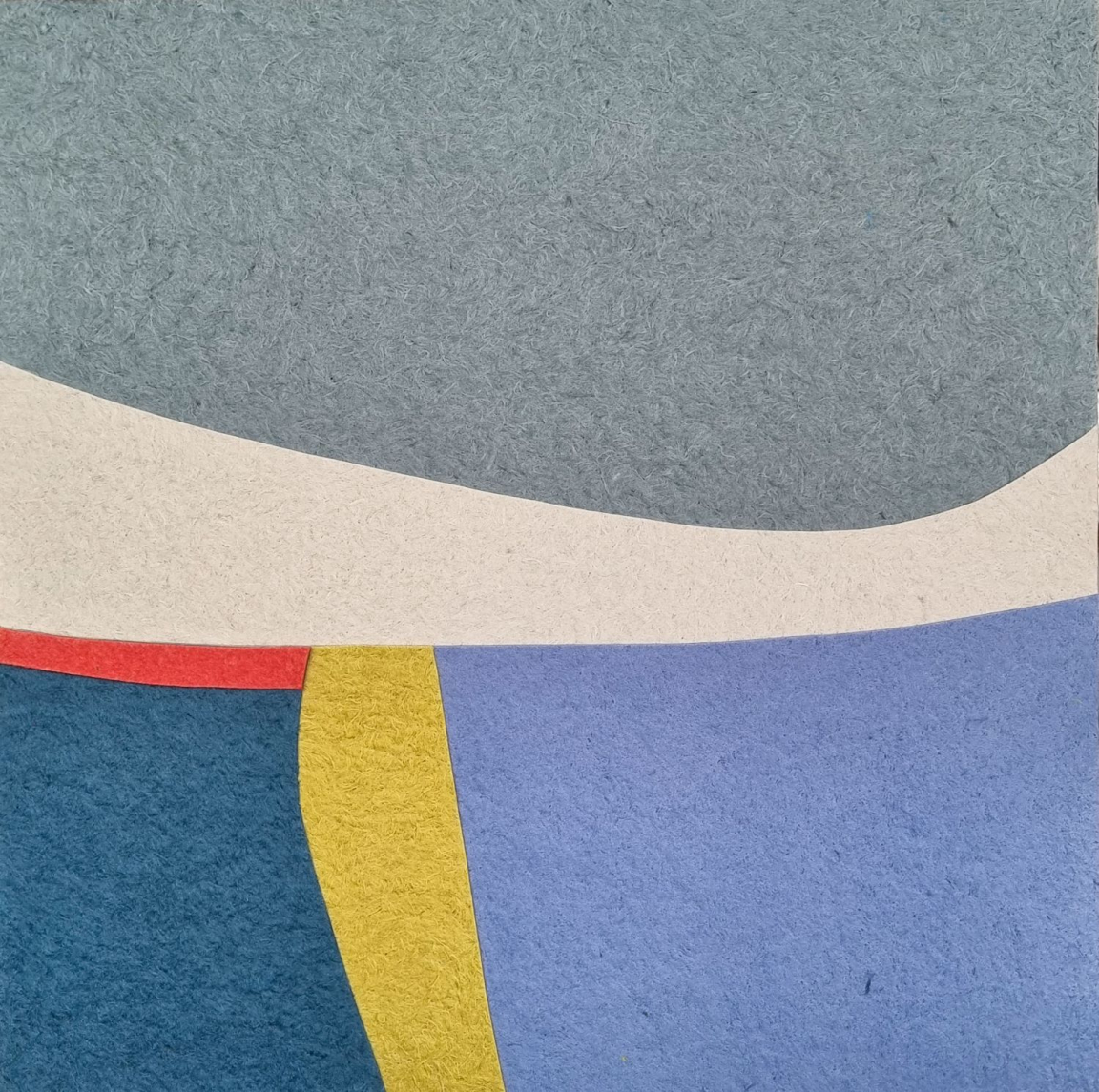
Credit: Sandra Junele / Collaboration with Camira
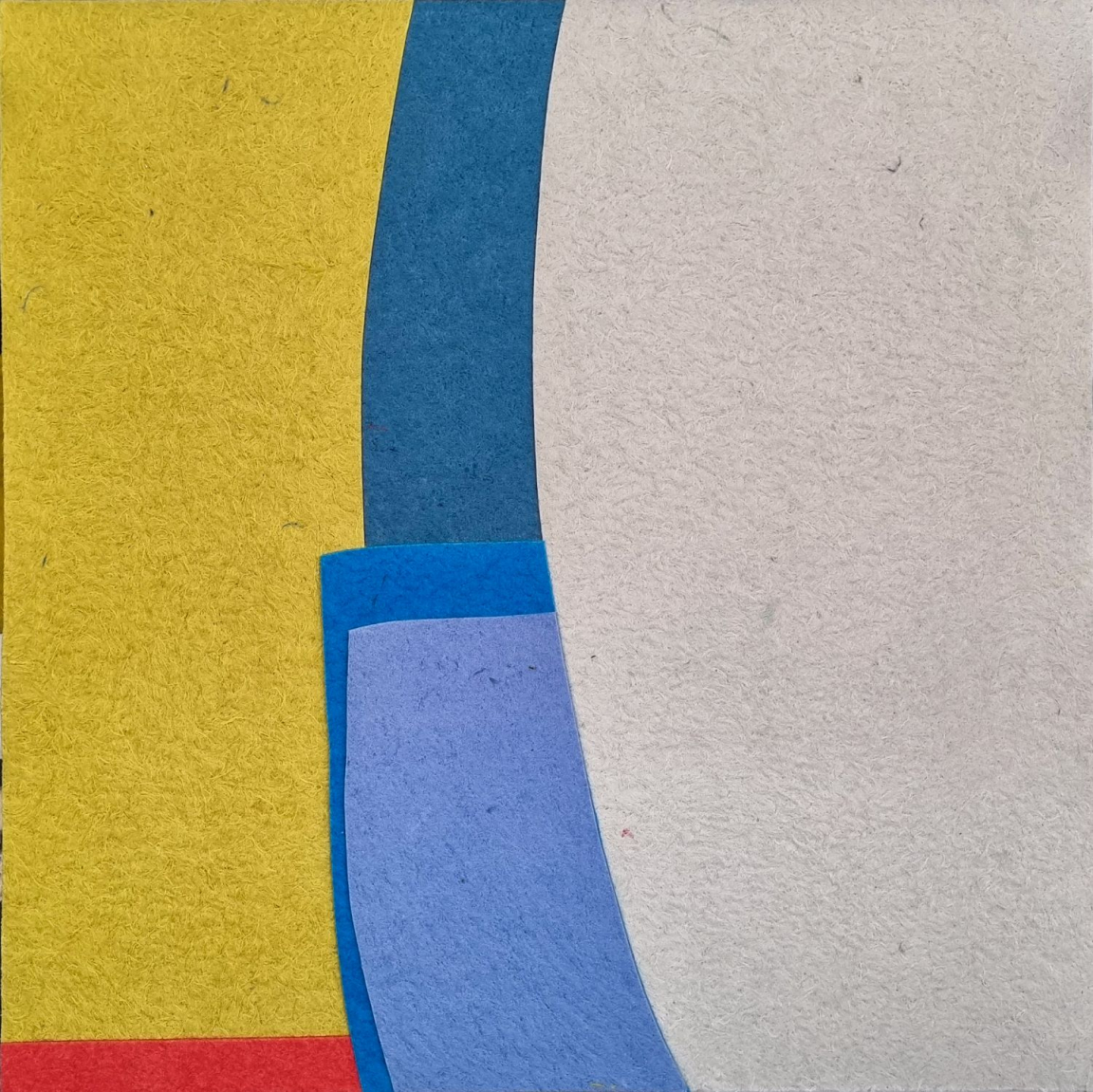
Credit: Sandra Junele / Collaboration with Camira
Each of your pieces are completely unique. What influences the colours and surface patterns you develop?
“Each of my pieces is completely unique, influenced by a blend of personal and collaborative sources. For my own designs, I often draw from my sketchbooks, which I've been filling since my studies in interior design in Latvia, college and textile design in Scotland. These sketchbooks are a treasure trove of ideas and inspirations that have evolved over time, guiding the colours and surface patterns I develop.
“Collaboration plays a significant role as well. I connect with other designers through social media or at degree shows, bringing fresh perspectives and innovative ideas into my work. These collaborations introduce new elements and enrich the creative process.
“Additionally, I love working on custom pieces when clients bring their own designs, such as logos or specific patterns or posters. Translating their visions into my unique materials and techniques adds another layer of creativity and personal touch.
“This mix of personal creativity and collaborative input ensures that every piece is truly one-of-a-kind, full of rich stories, and infused with diverse inspirations and talents.”
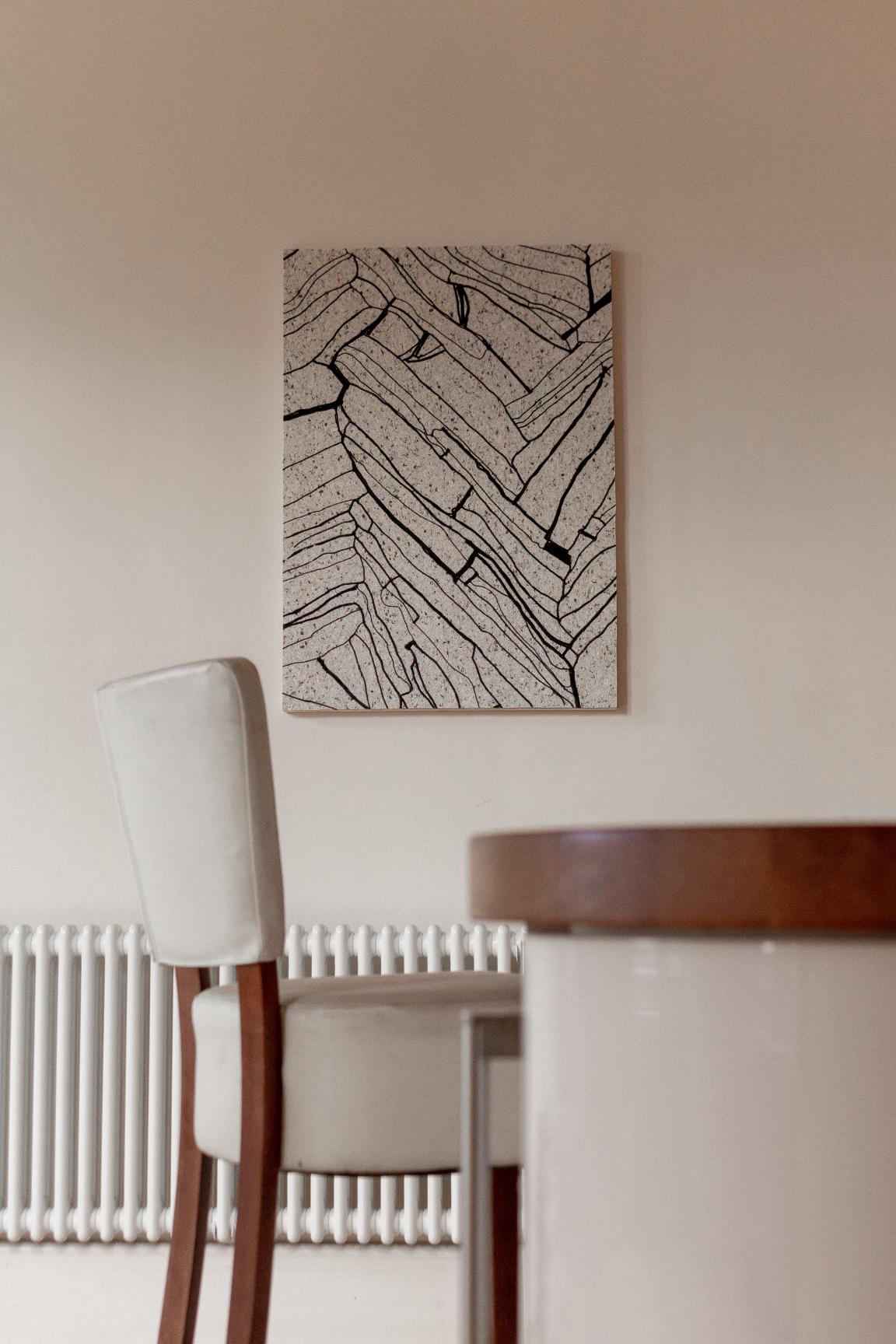
Credit: Sandra Junele
Could you share with us some recent projects and collaborations you’ve been working on?
“One of my most exciting recent projects was a large-scale collaborative artwork that was featured in a brand-new seafood restaurant in Newhaven, Edinburgh. This piece is my largest to date, measuring 225cm by 180cm.
“The artwork represents the contributions of 1,620 people, each square reflecting an individual’s choice of colour. I invited people to select their favourite colours through my Instagram posts, and I incorporated those choices into the piece. Many participants added personal meanings to their colour selections—like blue for their spouse, green for themselves, white for a beloved grandmother, or teal for their dogs.
“This project beautifully captures a collective story through vibrant colours and personal touches, making it a truly special and unique piece that celebrates both individual contributions and community spirit.”
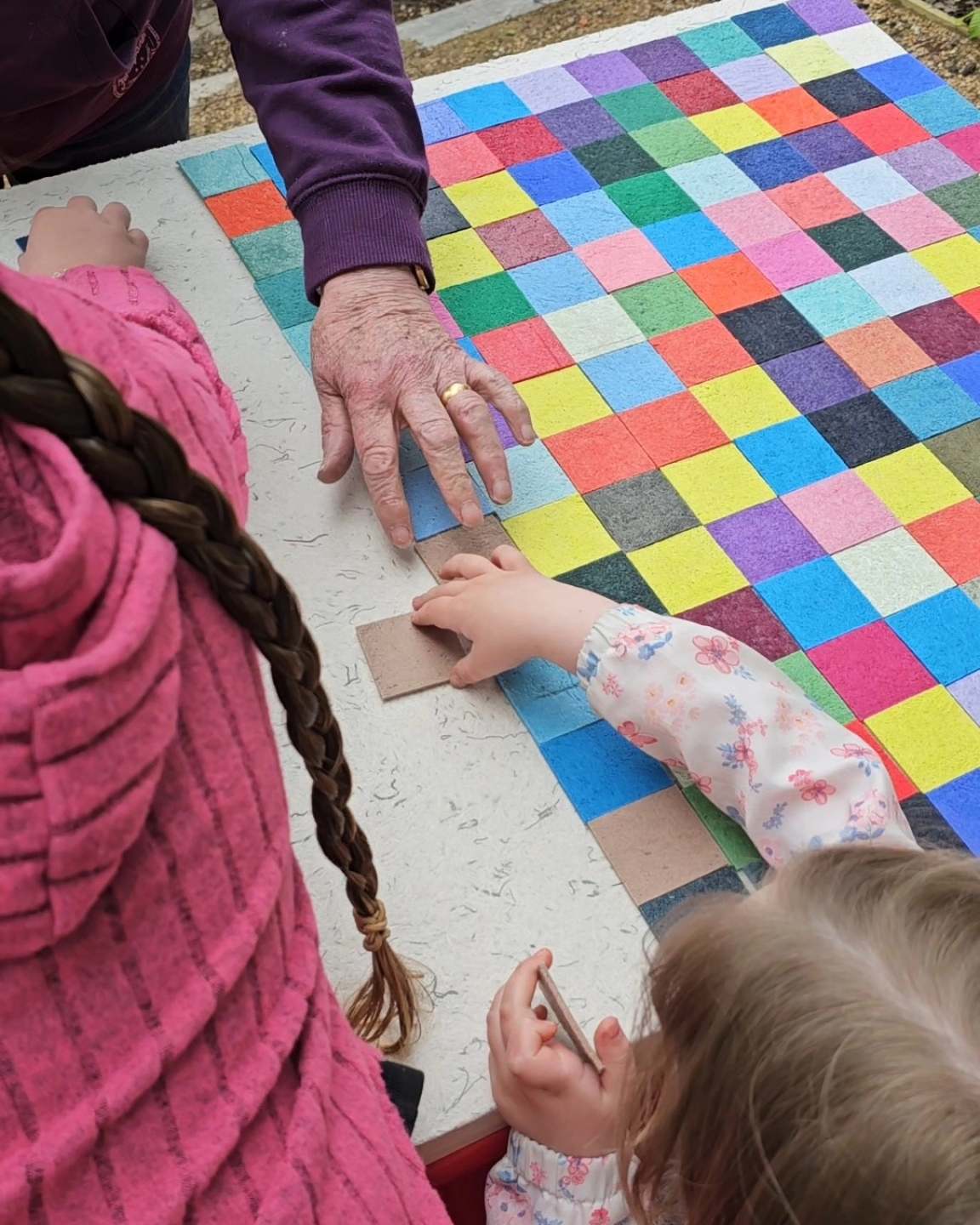
Credit: Sandra Junele
How do your artworks lend themselves advantageously to interior applications?
“My artworks are designed with interior applications in mind, offering several advantages that make them a perfect fit for various spaces:
“Customisable and unique: Each piece is completely unique and can be tailored to fit specific interior themes and colour schemes, whether it's a bold statement piece or a subtle accent.
“Sustainable and eco-friendly: Made from repurposed materials and biodegradable components, my artworks not only enhance the aesthetic appeal of a space but also align with eco-friendly values. They bring a sense of environmental responsibility and sustainability to interior design.
“Textural and visual impact: The texture and surface patterns of my artworks create a dynamic visual experience. The combination of colours and textures adds depth and character to walls, making them focal points in any room.
“Personal connection: Many pieces are inspired by personal stories or collaborative contributions, adding a unique narrative element to interior spaces. This can create meaningful and memorable connections between the artwork and the people who experience it.
“Overall, my artworks offer a blend of visual intrigue, sustainability, and personal touch, making them a thoughtful and impactful choice for enhancing any interior environment."
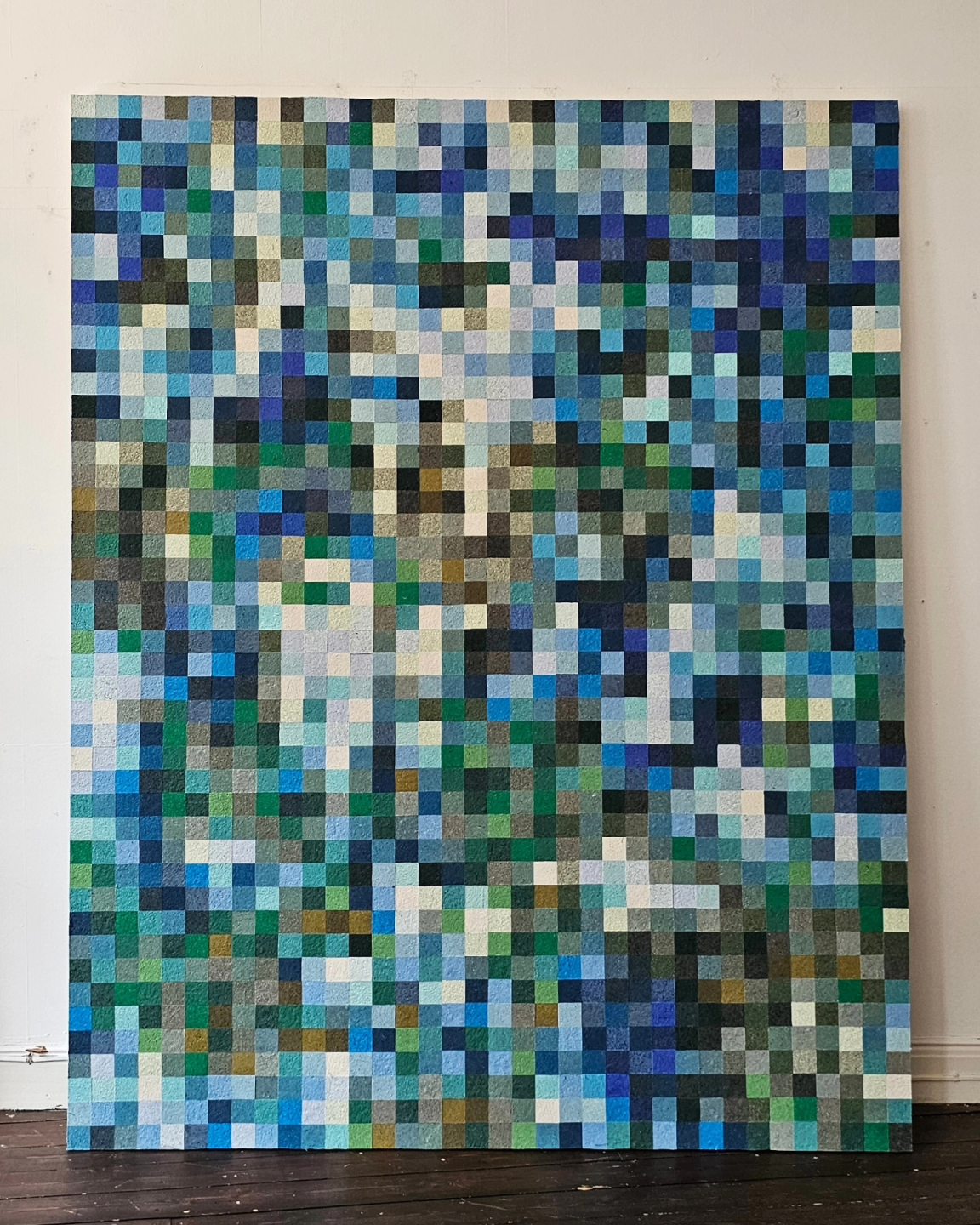
Credit: Sandra Junele / Featured in Pier House, Seafood Restaurant, Newhaven, Edinburgh
What's the design scene like in Dundee?
“The design and craft scene in Dundee, and Scotland more broadly, is vibrant and thriving, full of creativity and innovation.
“Dundee is a particularly exciting place for design and craft. The city has earned a reputation as Scotland's first UNESCO City of Design, thanks to its rich history and ongoing commitment to design excellence. Dundee's design community is diverse, with a strong focus on both contemporary and traditional crafts. The city hosts events like the Dundee Design Festival, which showcases local talent and fosters collaboration among designers, artists, and makers.
“Scotland as a whole is renowned for its rich craft heritage, from traditional textile weaving to cutting-edge contemporary design. The country is home to a range of craft fairs, galleries, and studios that celebrate Scottish artistry. Places like the Scottish Borders are known for their historic textile industries, while cities like Edinburgh and Glasgow are bustling with innovative designers and craftspersons pushing boundaries in art and design.”
You’ve collaborated with Material Source partner Camira in the past, can you tell us more about this project?
“My collaboration with Camira was a fantastic opportunity to blend innovation with creativity. Camira reached out to me as they were launching a new collection of textiles made from waste, which was to be showcased at Clerkenwell Design Week.
“To celebrate this groundbreaking collection, I was invited to create an artwork for their showroom in London using their own waste materials. I visited their manufacturing facility to observe the production process firsthand and collect the waste materials needed for the project.
“The result was a vibrant and meaningful piece that not only highlighted Camira’s commitment to sustainability, but also demonstrated the creative potential of repurposed materials. It was a wonderful experience working closely with Camira and bringing their vision to life in a way that underscores the importance of innovation in design.”
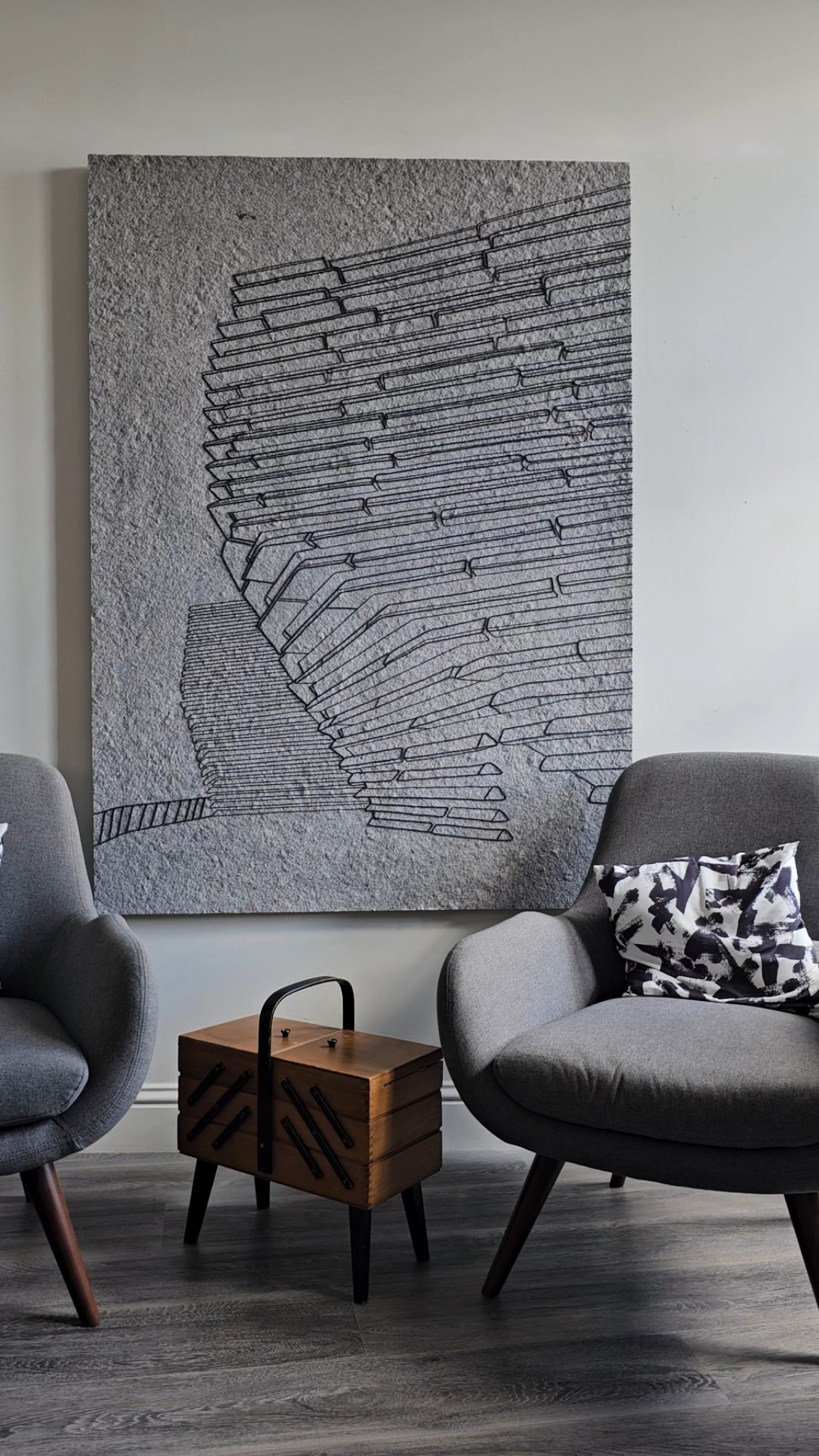
Credit: Sandra Junele / Featured architecture of V&A Dundee
And finally, what's next for you?
“Looking ahead, I’m filled with excitement and anticipation for what’s next. I’m currently exploring new ways to expand my use of sustainable materials and techniques, pushing the boundaries of what can be achieved with repurposed textiles.
“I’m also planning to collaborate with more designers and artists, both locally and internationally, to bring fresh perspectives and innovative ideas into my work. These collaborations will help me create even more unique and impactful pieces.
“One of my big dreams is to open my own shop-gallery, a space where every interior element is crafted from sustainable materials and decor made from textile waste. I envision it as a place that not only showcases my work, but also serves as a hub for like-minded creatives and eco-conscious design. Alongside this, I hope to establish my own manufacturing space to further control and innovate the creation process.
“Additionally, I’m eager to continue engaging with communities and organisations that share my passion for sustainability and creativity. I have some upcoming projects that involve community-driven art installations and educational workshops, which I hope will inspire others to explore the possibilities of repurposing and sustainable design.
“Ultimately, my goal is to keep evolving, learning, and contributing to the vibrant world of art and design. I’m excited about the future and the new opportunities to create, connect, and make a positive impact through my work.”
To learn more about Sandra’s catalogue of sustainable textile artworks, click here.


